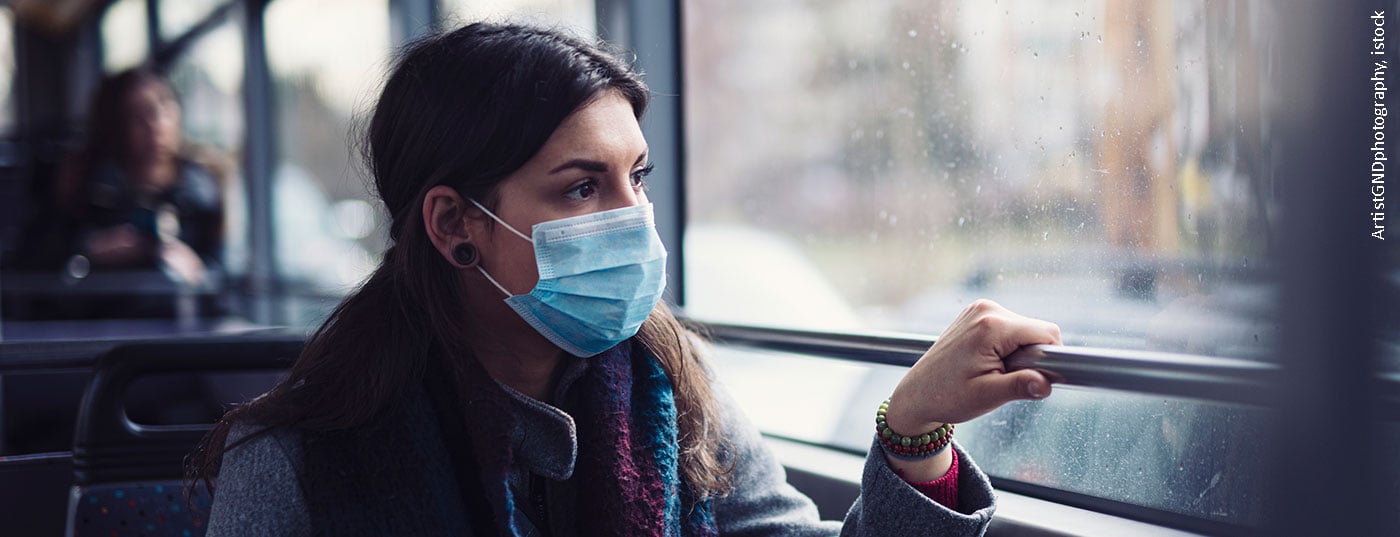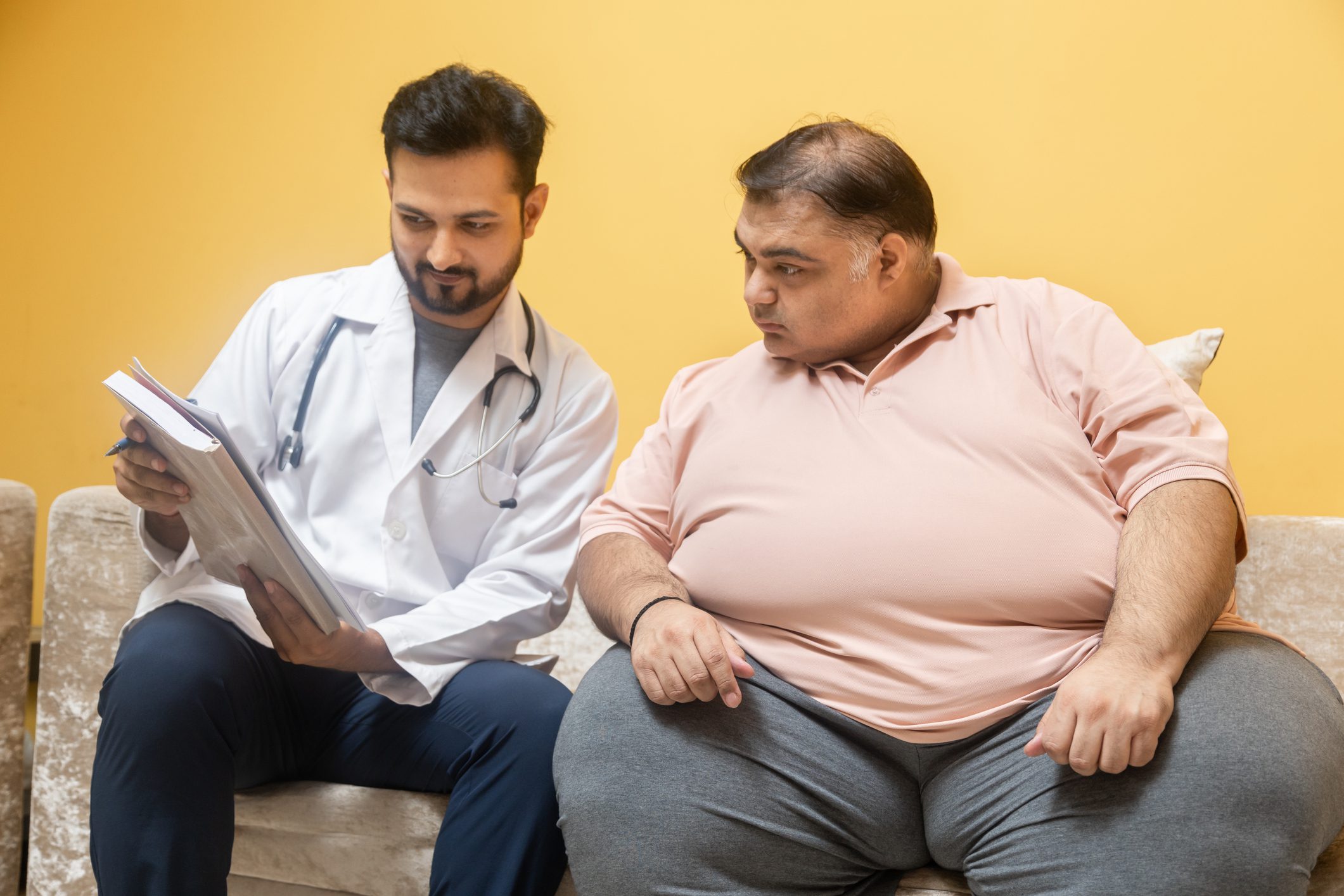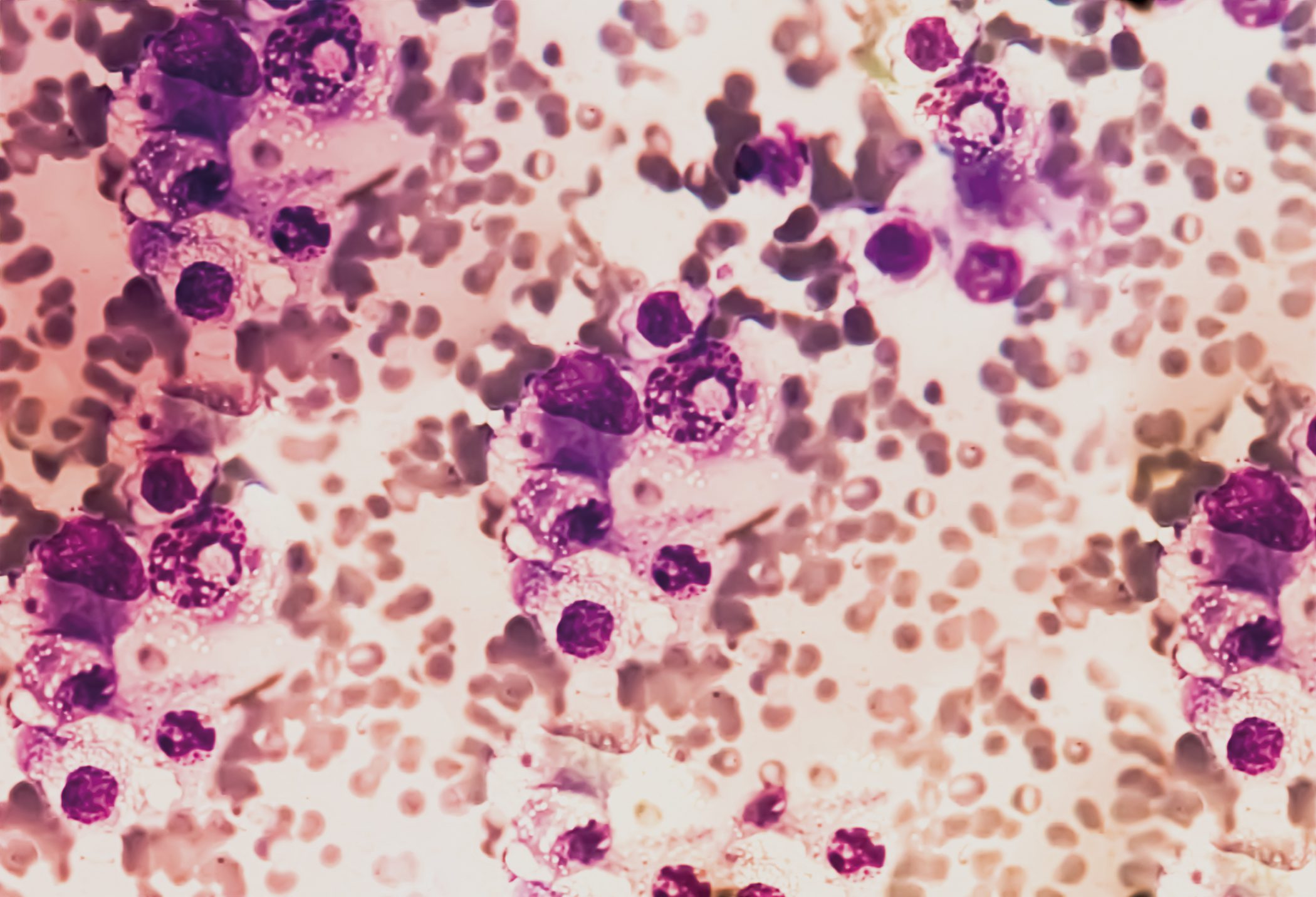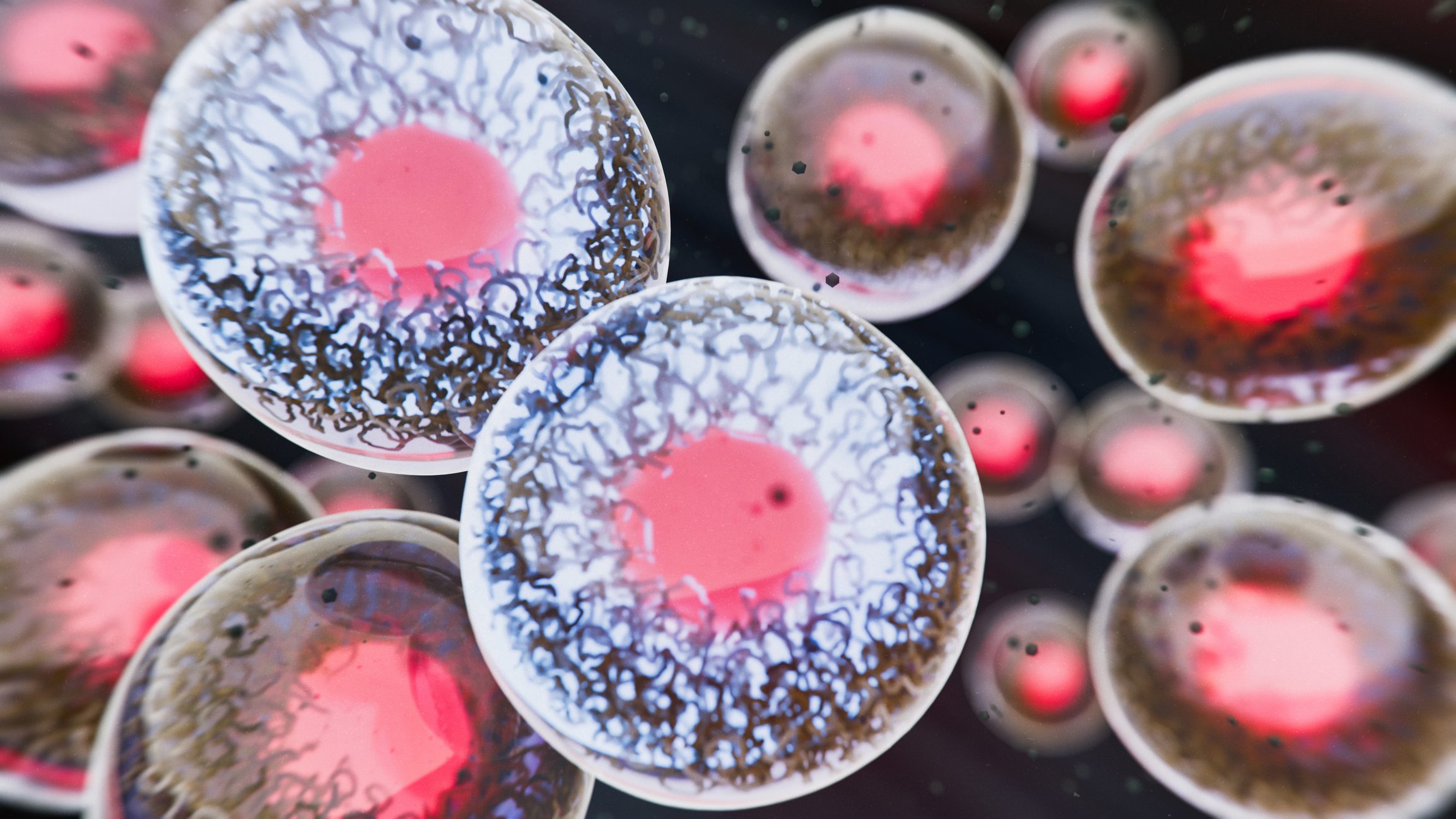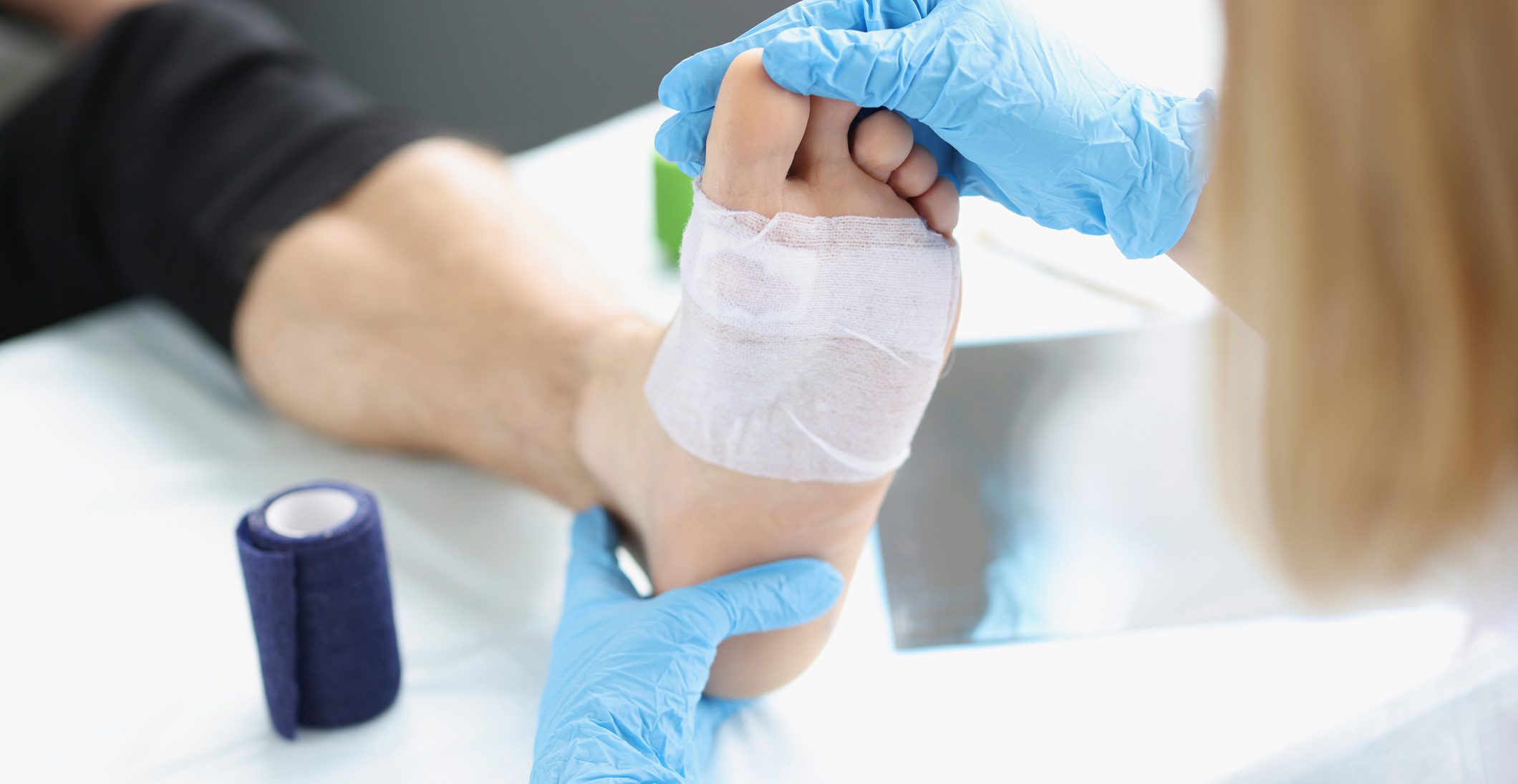The increasing normalization of everyday and public life raises new questions. What protective measures make sense? What do possible future scenarios look like? These were the questions addressed by several experts at digitalMedArt on May 8, 2020.
Protection in the health care system and in the population is central. “It’s the only thing we can currently use against SARS-CoV-2 with documented efficacy,” said Prof. Andreas Widmer, MD, dept. Chief Physician Clinic for Infectiology & Hospital Hygiene of the University Hospital Basel and President of the National Center for Infection Prevention [1]. These include masks, hand disinfection and gloves. Unfortunately, about 50% of infections occur before the onset of the disease, which means that these measures must be used consistently when people feel healthy in order to achieve maximum effect.
Which mask in which context?
There are very many different mask types, the quality certified ones in Europe are surgical masks and FFP2/3 masks (Tab. 1) . The FOPH recommends the use of the surgical mask (type I R, type II R) for health care workers resp. in the service sector, if a minimum distance of two meters cannot be maintained, and for persons with symptoms of acute respiratory infection who need to leave the house (e.g., for a medical appointment) [2]. The use of a FFP2/FFP3 mask is, according to the FOPH, particularly useful for directly exposed (health) professionals in activities with a high risk of aerosol generation, as well as in patient contact with justified suspicion or confirmed COVID-19. It is recommended to wear the FFP2 mask for up to 30 minutes beyond the aerosol-generating measure, and as long as the ill person is in the room. FFP2 masks can be worn by one employee for an entire shift [2]. An example of the use of a type I R or type II R mask is the situation where a surgeon wants to protect a patient during a surgical procedure. “Type I filters Staphylococcus aureus at 95%, Type II at 98%”. “R” stands for “fluid resistant”, which means if a splash happens in the operating room, this mask will protect against it. Masks with which health professionals can protect themselves are the FFP2 and FFP3 models. International standards exist for both surgical masks and respirators. The FFP2 and FFP3 masks are characterized by the fact that they seal well on the face – the criterion of the European standard (EN149-2001) is that ≤8% of the air is allowed to escape on the side [1]. Surgical masks are therefore primarily for the protection of the patient. Type I R or Type II R also provide some protection against droplet transmission. In a National Health Services study, surgical masks were shown to result in a 6-fold reduction in exposure, with FFP2/3 masks being significantly superior with a 100-fold reduction [3]. A US study published in 2019 showed that a hygiene mask, i.e. a surgical mask type II according to the FOPH Pandemic Act, protects better than assumed [4]. The protection offered by fabric masks was investigated by the WHO in a secondary analysis. The conclusion is that the quality varies greatly, but among the different models there are those that offer quite good protection. Test parameters included filtration capacity, permeability in terms of particle size, material and effects of cleaning/washing the masks. “It’s an emergency measure, but it’s better than nothing,” explains Prof. Widmer. The Center of Disease Control (CDC) has even issued sewing instructions for fabric masks in light of the scarce availability of surgical masks [1].
Hand disinfection and gloves
When disinfecting hands, he said it is important to use the WHO’s 3-step technique (10 seconds per step): 1. spread two strokes of disinfectant (about 3 ml) on palms and backs of hands, 2. Rotational rubbing of the fingertips in the palm of the alternative hand, 3. rub both thumbs rotatorily with the other hand. This technique has been evaluated in studies and has proven successful [5,6]. Certain criteria should also be observed for gloves (“Accepted Quality Level”<4). However, the speaker is skeptical about the protective effect of gloves, as it has been shown that it can lead to negligence in disinfecting the hands. His recommendation is to use gloves only for contact with COVID-19 confirmed patients (followed by hand disinfection) or where contact with body fluids is possible.
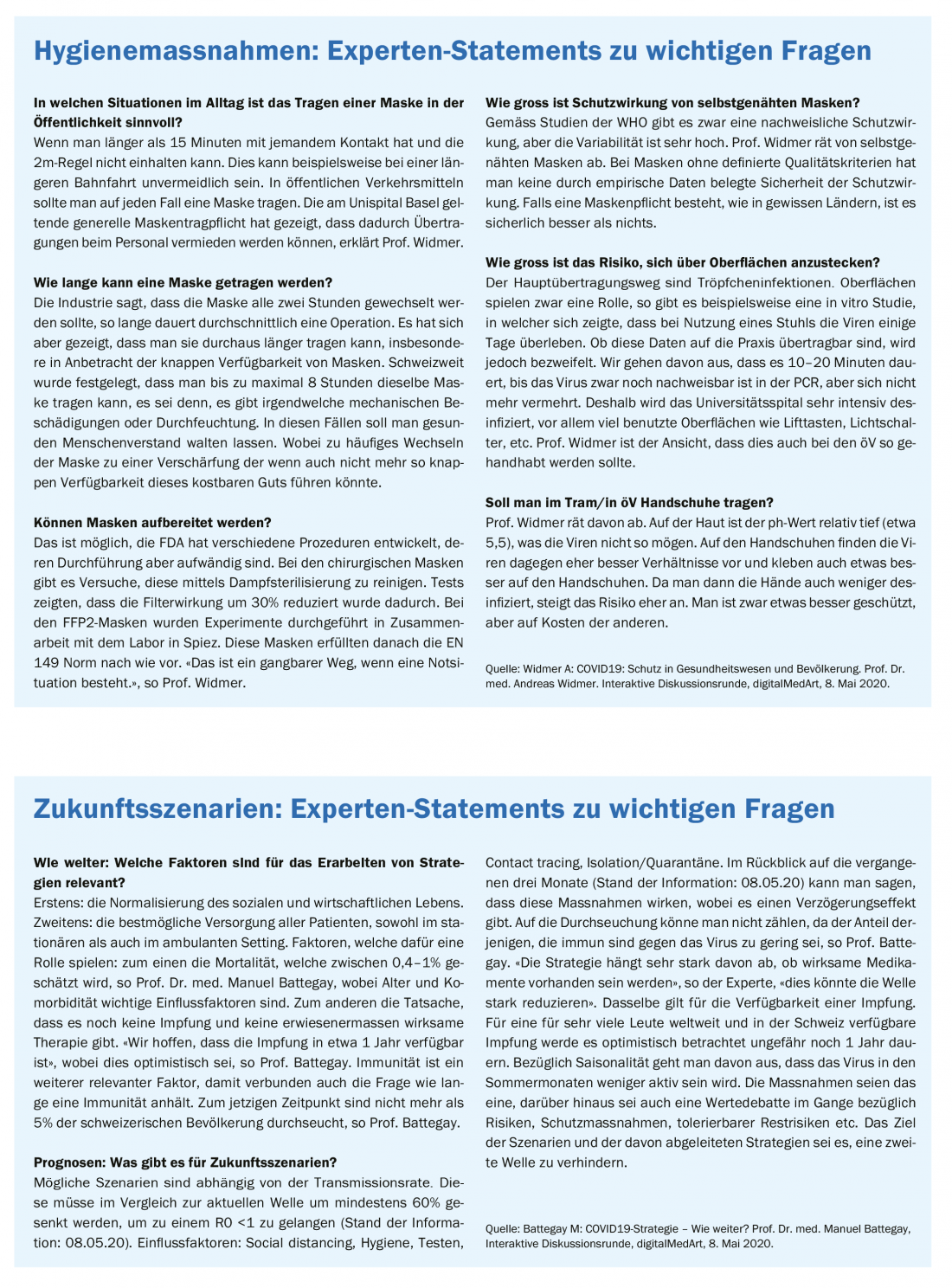
Literature:
- Widmer A: COVID19: Protection in health care and population. Prof. Dr. med. Andreas Widmer, Deput. Head of the Clinic for Infectiology & Hospital Hygiene at the University Hospital Basel and President of the National Center for Infection Prevention. Slide presentation, digitalMedArt, May 8, 2020.
- New coronavirus: protective concepts and measures, protective masks, www.bag.admin.ch/bag/de/home/krankheiten/ausbrueche-epidemien-pandemien
- Health and Safety Laboratory: Evaluating the protection afforded by surgical masks against influenza bioaerosols. Gross protection of surgical masks compared to filtering facepiece respirators, Research Report 619, 2008, www.hse.gov.uk/research/rrpdf/rr619.pdf
- Radonovich LJ, et al. Outcomes Respiratory Illnesses among Health Care Personnel in the N95 Respiratory Group vs the Medical Mask Group. JAMA 2019, 322(9): 824-833.
- Tschudin-Sutter S, Widmer AF: Clin Microbiol Infect 2017; 23(6): 409.e1-409.e4.
- Tschudin-Sutter S, Widmer AF: Clin Infect Dis 2019; 69(4): 614-660.
DERMATOLOGIE PRAXIS 2020; 30(3): 6-7 (published 6/4/20, ahead of print).


